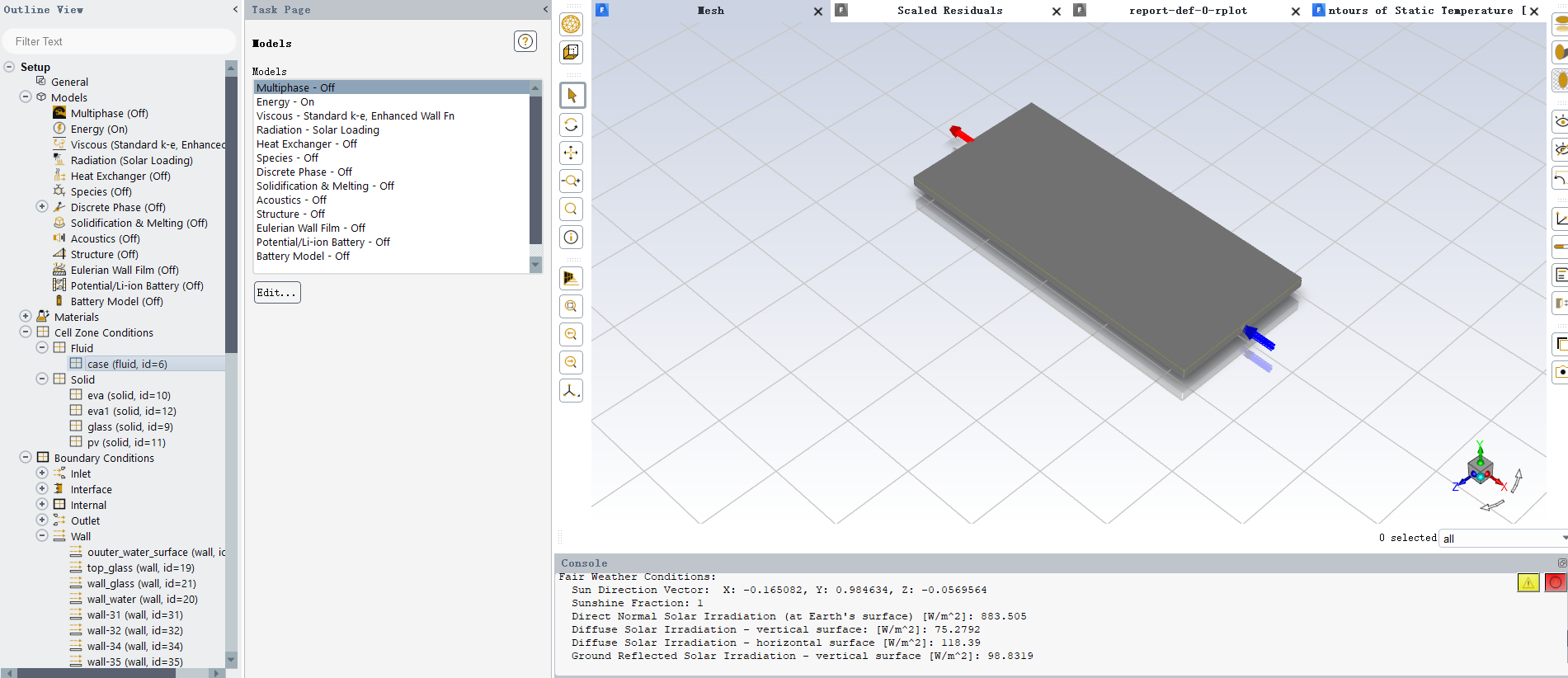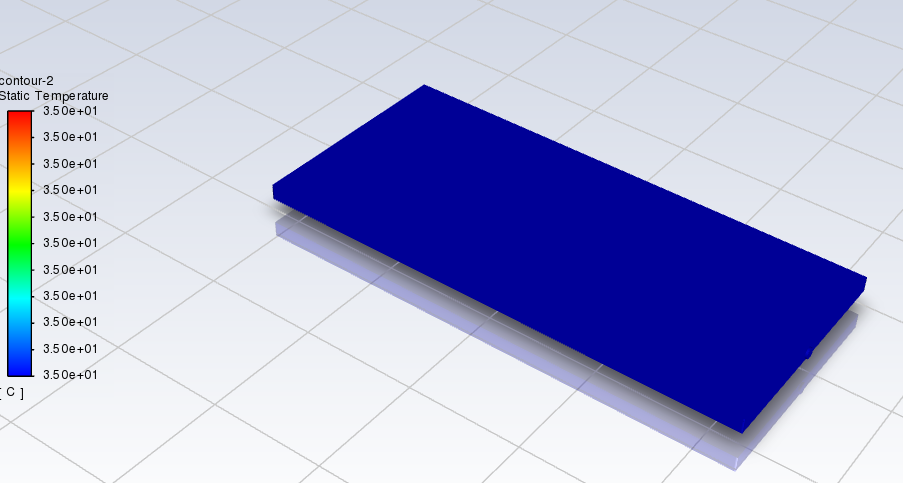-
-
July 12, 2024 at 10:19 am
Ahmad Alqatamin
SubscriberI simulate a simple PVT as shown in fig.
 I active the radiation model as shown in fig
I active the radiation model as shown in fig 
in the boundary condition on the radiation tap, I select participate in solar ray tracing just for the top surface (glass) and another layer like Eva, pv, and water layer I turn off this option but when I run, the temperature is still constant and the radiation equal zero above the top surface anyone help me to know what's the problem.
-
July 15, 2024 at 2:20 pm
Mark O
Ansys EmployeeHi, The solar ray tracing will only add heat to the interior side of a face. It tracks a ray until hit hits the interior side of a face, or is blocked by another face infront of it. If the emissivity is less than one then the reflected energy is uniformly distributed over all participating faces. If there are no inlets or outlets or semi-transparent walls in your model then no heat will get in. To simulate an external radiation source see knowledge article 000054050 "How to model external radiation with no external mesh?"
-
July 16, 2024 at 4:33 am
Ahmad Alqatamin
Subscriberthank you for your reply .
glass wall and eva layer and pv all layers are semi-transparent. why do the rays not transmit through it and heat it?
I can't find the article that you mentioned, can put a link here pls
-
-
July 16, 2024 at 9:02 am
Mark O
Ansys EmployeeHi, there needs to be an opaque surface that has been set to participate in radiation that an incoming solar ray has a direct line-of-sight to.
There looks to be an issue with the search in the knowledge section in AIS. I have copied the article here.
Title
How to model external radiation with no external mesh?
Content
The built-in solar load models will only add a solar load to the fluid side of a wall boundary and so are not appropriate if the outside surfaces of a wall all belong to a boundary and there are no holes in the boundary to allow photons to enter.
The effect of the sun on external surfaces can be modelled by raising the external radiation temperature on the thermal tab of a wall boundary condition. The expressions below take account of the direction in which the external wall faces and only adds the solar load on wall faces facing the sun. Note that it will not take into account external walls that combine to have a complicated concave shape in which some external walls are in the shadow of other external walls. It only takes into account whether a wall is forwards facing or backwards facing.
The expressions make use of vector operations, which are available from Fluent 2021 onwards:
Expressions
----------------------------
solar_emissivity = 0.5
thermal_emissivity = 0.5
external_temperature = 290 [K]
solar_direction = vector(1,-0.5,-0.5)
solar_flux = 250 [W/m^2]
wall_area = vector(XFaceArea,YFaceArea,ZFaceArea)
cos_wall_angle = max(0, -dot(solar_direction,wall_area)/(solar_direction.mag*wall_area.mag))
external_rad_flux = solar_emissivity*solar_flux*cos_wall_angle
external_rad_temp = (external_rad_flux/stefan/thermal_emissivity+external_temperature^4)^(0.25)
-----------------------------
In the wall boundary condition:
------------------------------
Set the external emissivity to thermal_emissivity
Set the external radiation temperature to external_rad_temp
Fluent will then compute:
------------------------
wall_flux = external_emissivity*stefan*(external_rad_temp^4 - wall_temp^4)
= thermal_emissivity*stefan*(external_rad_flux/stefan/thermal_emissivity+external_temperature^4 - wall_temp^4)
= external_rad_flux + thermal_emissivity*stefan*(external_temperature^4 - wall_temp^4)
= solar_emissivity*solar_flux*cos_wall_angle + thermal_emissivity*stefan*(external_temperature^4 - wall_temp^4)
-
- The topic ‘solar radiation’ is closed to new replies.



-
4678
-
1565
-
1386
-
1242
-
1021

© 2025 Copyright ANSYS, Inc. All rights reserved.








